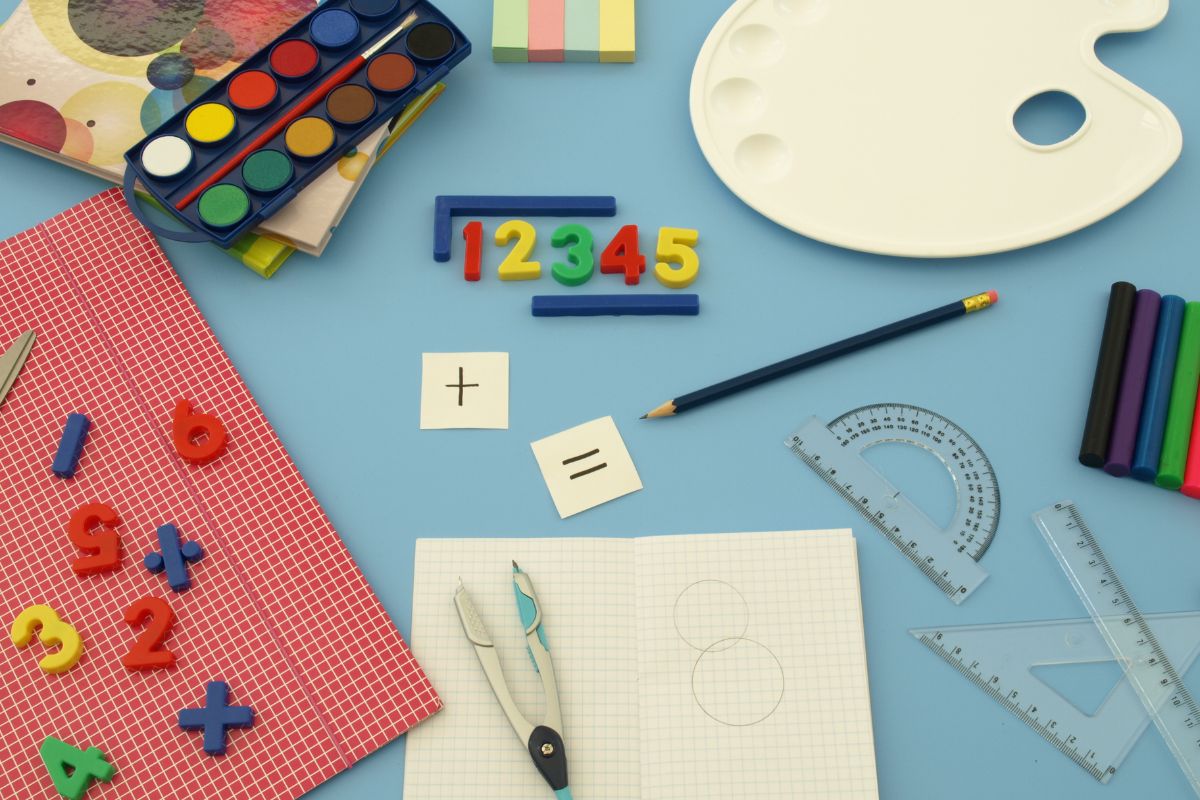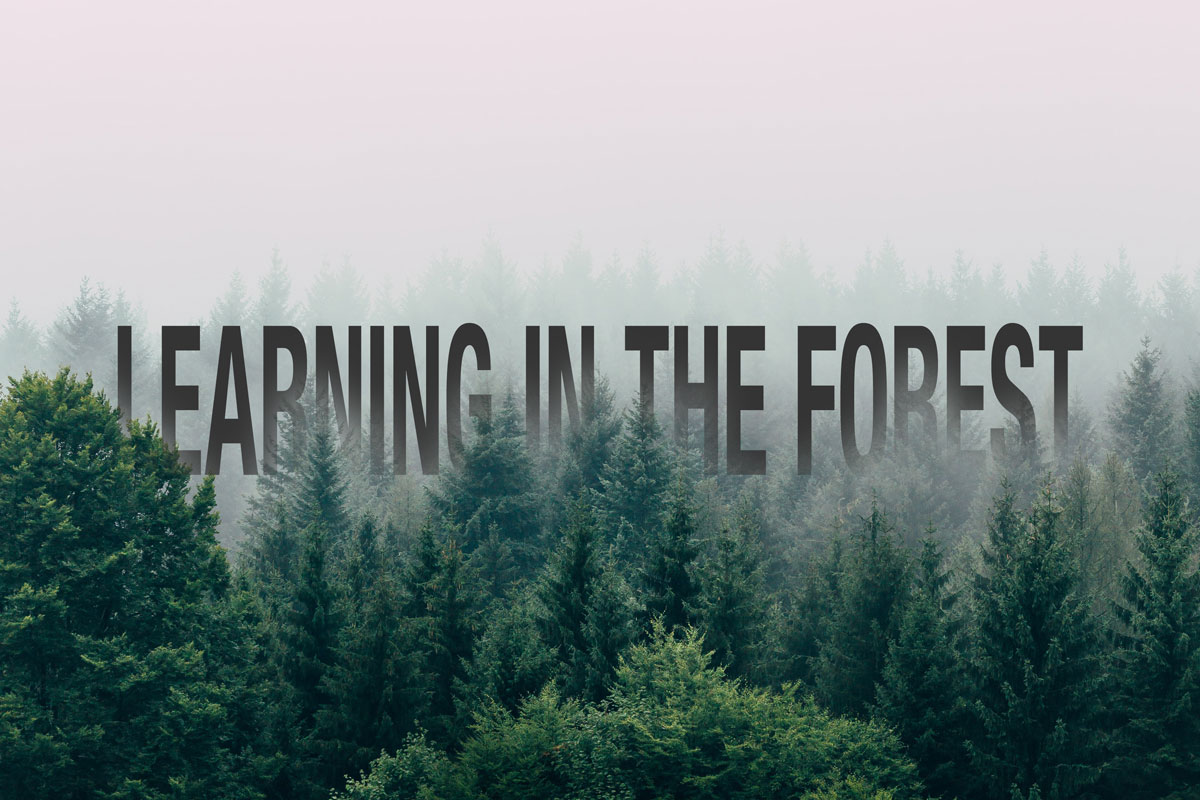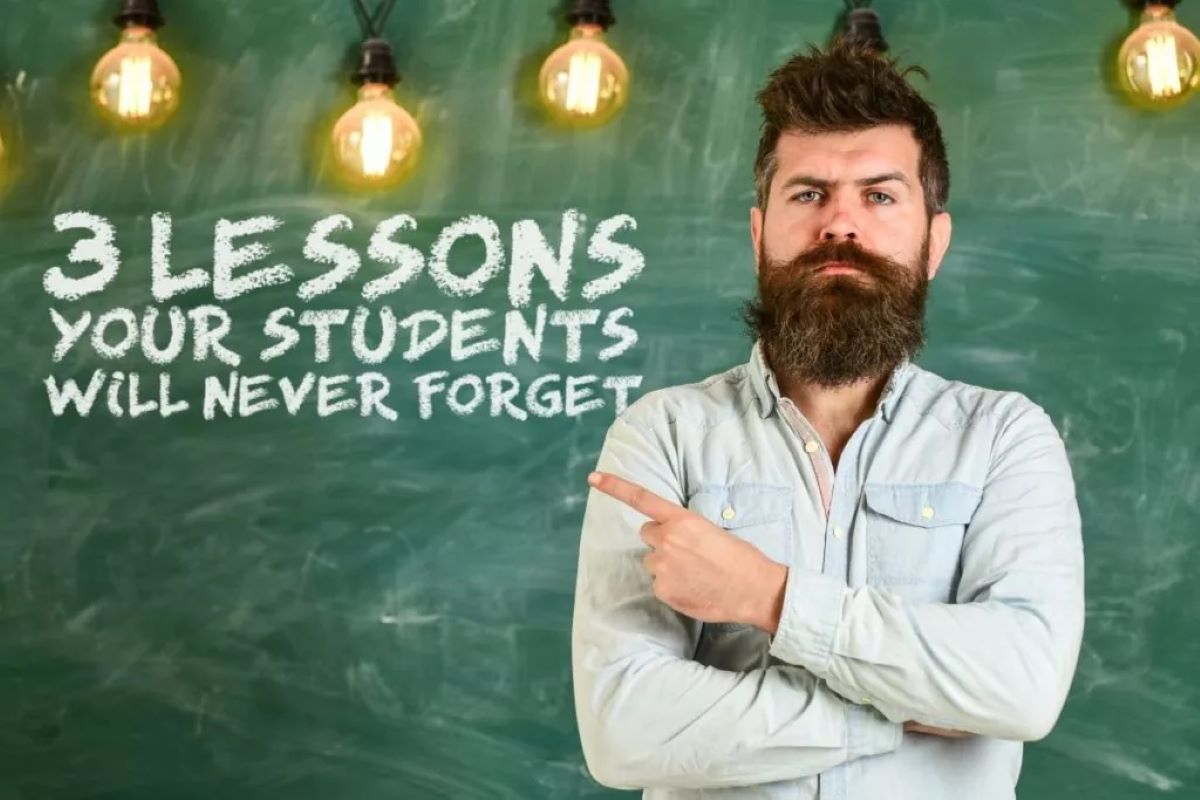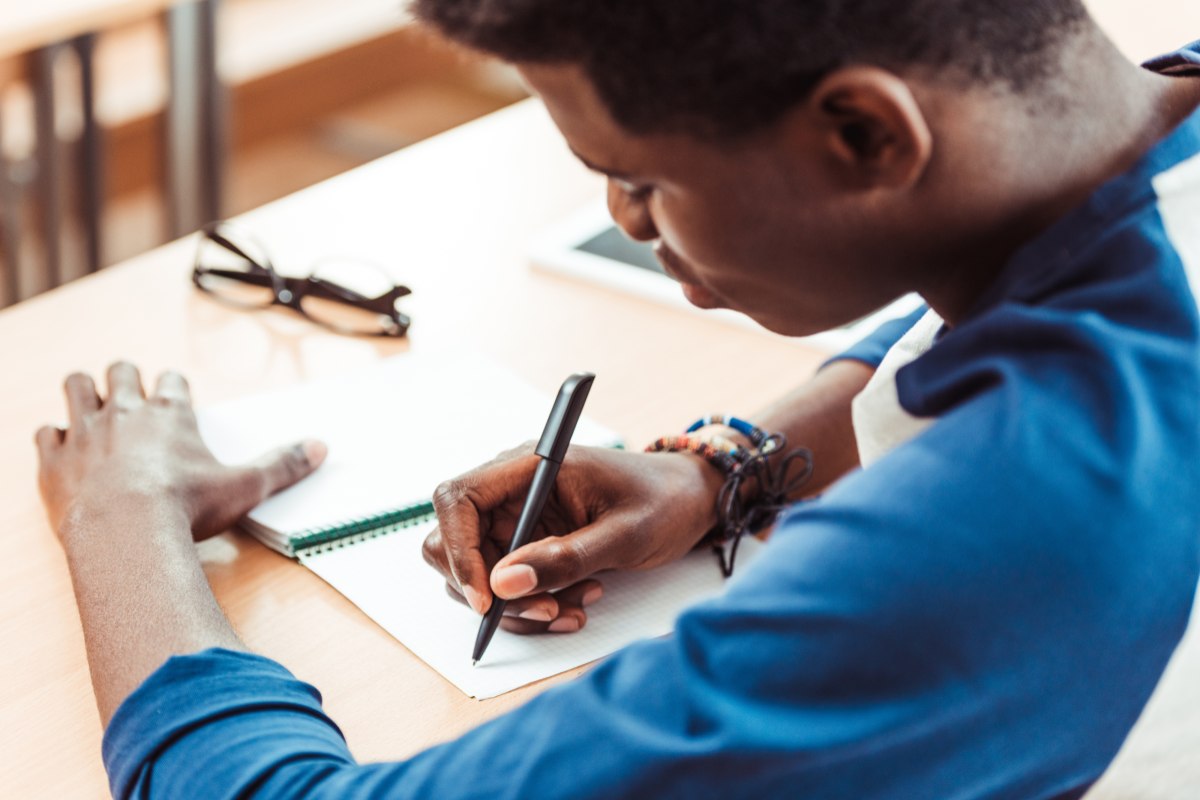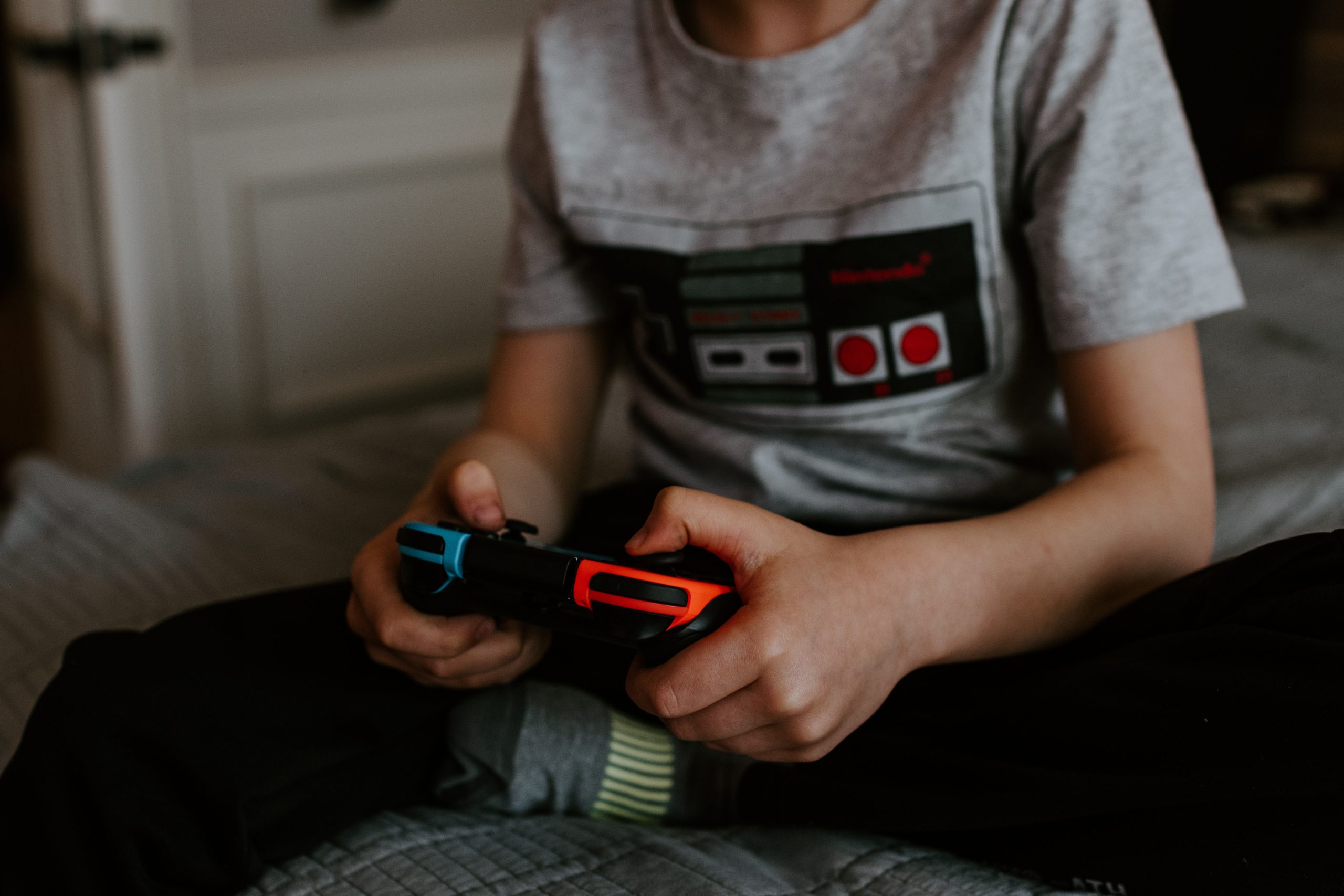How to Treat Students Like Individuals

For teachers, it can become common to think of your classes as fully functioning organisms on their own, instead of looking at students as the individuals they are. Simply put, it’s just easier to plan for one “class” than to plan for each student. However, after trying out teaching in rows, in a “U”, and in pairs, I’ve finally done enough testing in my classroom to learn how to treat students like individuals, make accommodations easily, and lesson plan with individual student needs in mind.
From day one, I’ve found my strong suit as a teacher has always been relationship building. It pained me deeply to teach my students all the same way, in rows, torturing a good percentage of the class in the process. This type of teaching only engaged some of my students, those students not interested in English Language Arts were bored and didn’t turn in their work, my kids loved me but didn’t love the content. That had to change. But, I had no idea how else to teach them. The longer I taught that way, the more I stopped caring how other teachers were doing it, and determined that I had to do it “my” way. So I set out on a mission to figure out a new course of action. I started reading articles online. I read “Teach Like A Pirate”, “Learn Like A Pirate”, and the “Innovator’s Mindset. I moved to a new state and started working at a new school where the principal was ready to start changing the way the classroom looked. My “partner in crime”, who also taught English 10, was in the same frame of mind as myself, our kids would stay in groups, the whole year. We would lesson plan with choices on texts and assignments. We would not fear days that weren’t successful, but stick to plan the plan. No matter how terrifying the idea of failing at this new way of teaching was, we would stick to it, and stick together.
I understand how scary it is to change the way you’ve done things for years. I also know how defeating it can be to plan a lesson you think will be fun, innovative, super cool, and then feel like it totally botched it. If my principal hadn’t been there watching me do a lesson that incorporated groups, movement, and personalized learning to tell me all of the things I had done well, I would only have seen what went wrong, and probably would never have tried it again. I’m going to tell you the thing my principal told me, just because you see what went wrong doesn’t mean the lesson was a failure. Keep doing it, everything in life takes practice, come up with solutions for the things you didn’t think went well and TRY AGAIN. Don’t give up from a fear of failure. Otherwise your fear will get in the way of amazing things happening in the classroom.
Here’s what happens when you push yourself and look for the successes of a class versus how you failed. You see how much kids enjoyed the lesson, even though that one kid gave you a hard time. Your students will be excited for the next time they get to do something “cool”. Once I started doing personalized lessons, my kids were ALL engaged, not some. They learned about things that interested them. They showed off what they were good at and were proud of their work. My turn in rate increased tremendously. Suddenly the number of zeros I was putting into the gradebook turned into just maybe two kids out of the entire class. They were all happy to be in the classroom, not just to see me, but to see what they got to do that day.
Here’s how I was able to make my classroom fun, innovative, and engaging, while allowing students to be themselves and helps you connect and teach the individual student every day.
Procedures First
Set up clear policies and procedures on how you expect students to enter the classroom. In Harry Wong’s, “The First Days of School”, he teaches the importance of establishing your policies and procedures from day 1. You must set the expectations for students clearly, even posting your classroom expectations on the wall for every little thing. For instance, students should know how to get started for the day, where to sit at the beginning of class (even if they move later), how to turn in assignments and how to get their work back; how and when they can move about the class, and at what times throughout the class can they talk with their peers. This is all important for you to set up, so neither you nor your students get frustrated during the class. It also will set your students up for success to be as independent as possible throughout the day or period.
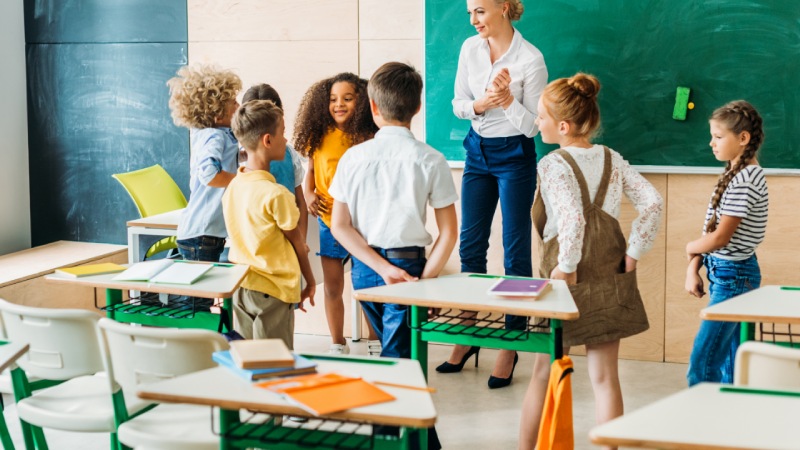
The Importance of Hello
Always be outside of the door greeting students. Take time to get to know them. Ask questions about their life and root for them in endeavors outside of your class. Show your students you genuinely care and are not someone who might flake on them. Building strong relationships with your students is very important. It will help you manage behavior and will show your students that they are worthy of being cared for. It’s your job to help them build confidence and excitement for learning. By establishing a solid relationship with your students they will listen to your praise. I learned early on the importance of “hello” in my year of student teaching. A young man, adorable, outgoing, always smiling and joking around, just the sweetest thing. He was well liked by everyone in the class and even though he could barely sit still I adored that kid. He transferred to another class and a few weeks later we were all being brought into a school meeting to learn he had committed suicide. I have never felt such a deep grief in all of my life. Part of me wanted to run away and never feel that pain again. I never considered the possibility of losing a student. Instead, I made it my mission to pay close attention to all of my students, love them unconditionally, and be there for them. It doesn’t matter how happy they look on the outside, I still check in on them every day, each day. This has impacted my class in such a positive way because I have never had a student that didn’t think I cared. What I found was that my students never forgot me, or my class (even the kids in rows) because they all appreciated how much I cared.
As time has gone on, there have been many times I’ve been approached by teachers about a student we both share. The colleague is at their wit’s end, they can’t get the student to do their assignments, the student constantly has an attitude with this teacher, but that student told them they like my class… What is so different? The teacher asks me what I’m doing to not have those same behavior issues? The truth is, my students love me and I love them. That sense of family in the classroom means we look out for one another, the kids do their work, and in the halls if they see a kid disrespect me they always try to butt in and tell anyone off who messes with Mrs. Senesac. My students can come to me years later with a story about how my class taught them they were worth something, that they can do anything, that they are smart and are capable of being loved and genuinely cared for by another person. These words always bring tears to my eyes. How can these sweet kids not know they’re worthy of being loved? But that feeling of being loved, knowing my classroom expectations, meant I had more productive days, even with the students other teachers complained about. I had one student who regularly was in school suspension for their behavior in other classrooms. They cussed their teachers out on a regular basis and hated their classes. That same person came to my class and would still cuss in order to communicate their feelings, but never at me. They would even apologize when they let a curse word slip in my class. When a substitute came in, they always made sure everyone was on task and did the work I assigned. It’s amazing what a good relationship will do. Read more on my relationship building tips and trick with the article “A Simple Hello”.
Voice and Choice in the Classroom
Lesson plan with options in mind. You can provide options to students with what they read, what they research, and even choices on how they complete an assignment. Let students choose how they’re mastering a standard by providing them with a list of options. Say they need to evaluate the author’s purpose, they can show you their understanding through writing, a video, a podcast, a poster, or website. You simply create a rubric that gives students the same level of difficulty for each option you provide. The rubric for each task shows students that everyone is working at the same level of difficulty as the other. There is no task easier than another based on what you ask them to do. That’s key to success and you’ll get to see how each student tackles the activities with their unique flare.
For example, you have students choose from a list of short stories, each story may have different lexiles, but it’s their choice what they want to read. Nothing unfair about that. Next, it doesn’t matter how difficult the text is, everyone is analyzing their short story in the same intensive way. You have students pull out quotes from the text to show the mood of the story, same for tone. They must do the same to identify the theme of the story. Then have students either do research on the genre or the author of their chosen text. Then, they each have to write a paper or create a podcast (that first must be written out) where they analyze the author’s background or the genre (student’s choice) and how it influences elements of the text. Use their evidence of the tone, mood, and theme of the text and relate it to other stories in the genre or relate it to the author’s background and thus their purpose of writing the text. In order to create such an intensive analysis via podcast or essay they all have to put forth the same effort, it may as well be done with the story they actually want to read, vice the shortest story they have no interest in. You can also provide more options like creating a video or website to show the same content, but you must create a rubric that clearly shows that each activity is just as difficult as the other. This will prevent complaints of fairness and will get students doing the actual activities they want to do, which means they’ll put forth more effort to make the best product possible.
Collaborative Learning over Cooperative Learning
Keep students in groups. Allow them to collaborate, be a team, but always have enough “jobs” for an assignment so you can see each group member’s personal touch. Being in groups means you can walk around the classroom and give each group the individual time they need with you for small group or one on one learning moments. This allows you to really check in and see who is “getting it”. This is also my secret to always making sure I have time to check in and see how my students are doing both emotionally and with the work in class.
Groups can do several types of collaborative activities. Once they’re in groups every day, they get used to working together on an assignment but still having to complete their own work you assign as an independent activity. They also get in the habit of taking on a job or role when you’re doing group assignments. This all about establishing a routine and solid expectations for different activities. You can plan out projects or activities where they each are working together as a team to complete different tasks that will later come together as a single group assignment. For example, I do a group activity using hyperlinks in a Google doc so that groups can explore different countries in Africa via the Airplane website. They take a virtual field trip and learn about two different countries in Africa which they will later compare and contrast. There are a series of questions for the groups to answer but each group member must write their own response using a specific color font to type their answers into their group’s worksheet. This makes it faster to see who did what. I also double-check the edit history to make sure the person who says they typed that information, did in fact type it up. This isn’t a trick I show my students ahead of time that I can check this information, and I even show them how I do it. This helps set high expectations for participation. Each group chooses a specific country from a list to explore as a team. They describe what they saw, what they learned, what they read about. Then they engage in different group discussion questions to compare the different countries in Africa to the one they explored. They decide if they want to continue researching this country further or swap over to another country for more points. It’s a fun virtual lesson that can easily be done in person or during a break out session in the virtual classroom.
One of my favorite group activities was in my World Literature class when I allowed groups to pick a Hindu god or goddess to create a colorful poster on as a group. I know posters are old school, but having choices and the products that came out of those standard classes was phenomenal. Here’s how I managed that. I let them temporarily pick the groups they’d be working in that week, with the condition one group member had to be really good at art. I didn’t think I would have that many artists in all of my classes and groups but somehow, every group rose to the occasion. They had the most beautiful posters I’d ever seen with all of the research requirements I’d asked of them. Then at the end, each group presented their posters on Flipgrid using my questions in the Flipgrud assignment instructions. It was incredible. They were all excited and engaged, they all put forth maximum effort and I was very pleased with their products. Even more happy with how pretty they made my classroom look. This just goes to show that when you give students the expectations they do everything they can to rise to the occasion.
The last example has to be another favorite of mine. I love to surprise students with different activities at their tables. Each group has different instructions to complete. I set a timer then they rotate to a new group to do the next activity. Students are given instructions on how and when to rotate, including what to bring with them. Specific examples of rotation activities are to come. It’s easy to have single questions to answer at each group of tables, then have them rotate and discuss as a group until all of the questions are answered. I even enjoy playing music as they rotate to really help liven up the room.
Engage through the Senses
I’ve created quite a few activities where students must use all of their senses in order to complete the given tasks I’ve assigned them. For instance, a station rotation activity for analysing the different types of imagery. One station for sight (visual), another for sound (auditory), another for taste (gustatory), one for touch (tactical), and the last one for smell (olfactory). This was a creative writing project where they had to describe what they saw, heard, tasted, felt, and smelled at each station. For sight I post several beautiful, detailed images for them to choose to write about. The auditory station has computers with headphones, they log into Google Classroom and pick from several different YouTube links to different sounds to use for their writing, they must be as descriptive as possible. The taste station had spices pre-Covid, now they look at pictures of food and describe what one of them tastes like. At the tactile station students must wear a blindfold or close their eyes and reach into different bags and describe what different unknown objects feel like. Then finally the gustatory station is where they must describe how something smells based off of pictures of flowers, cakes, citrus fruits, shoes, couches, a basketball, the ocean etc. Every station it is a requirement to make me see, hear, feel, taste, and smell whatever they are describing without actually saying what it is they are describing.
On days where you can’t incorporate every sense, try to do as many as possible. Have eye catching visuals in your lessons. Get them up and moving in the classroom. Instead of doing an essay outline on paper use blocks, or have them create a poster drawing of what an essay should look like in a visual symbolic representation. Get creative and have students stretch their imagination.
Have moments for movement and moments where students get to talk amongst themselves. Teach them what productive sounds look like. Students need to learn how to be effective collaborators; it doesn’t happen on day one, it takes time so be patient and keep trying. Movement moments are important for the brain. Many times kids sit all day. Set a timer for how long students are going to work for then let them stretch, talk off task, and be themselves for a whole 5 minutes. When the timer goes off again, have them refocus, use a simple jumpstart question so they can get back to working and talking “on-task” in their group.
Have lessons and activities where the only way students can get answers is by walking around the room to find them. Instead of giving them a print out of a poem or pages to read in a textbook, I tape them to the walls in a 360 circle around my classroom. This forces them to get up and move around. My students love station rotation activities and learning games that incorporate movement. They also love days where they get to work outside or have to go on a guided tour with me to inspire their assignment. They’ve done photojournalism activities, where they take pictures as I guide them around the school,as I guide them around the school,
Being able to do all these fun things with my students took a lot of days that didn’t go perfectly, before I figured out how to make this work. My students are happier because I didn’t give up. Again, that was terrifying. I don’t like things to not go perfectly. It doesn’t feel like I’m doing the right thing, but even the days I think aren’t going well, my students usually would disagree, they love the interactive activities that are planned for them.

Games for Class
Play games at least once per week. Kids learn a lot through play. Try these games out:
- Kahoot- create an account and choose from any topic and play! There are so many quiz games to choose from and your kids will love trying to get the best score.
- Musical chairs- Have five marked chairs in the circle, play the music and stop it when you feel like it, students stuck in marked chairs have to answer the questions you’re reviewing about your content..
- Grammar Ball Toss- where you pick a letter of the alphabet and a part of grammar you want to review (students toss a ball to each and try to get a streak to beat other classes, for instance nouns that start with “d”, the first person to break the streak ends it and a new score is put on the board, classes compete with each other to win a prize), or something else you’ve made up for them.
Make learning fun and they won’t know you’re just doing a review of what they learned that week. It also makes them feel like they’re getting a break for the rigorous week they had analyzing a text from a list of options you gave them, or whatever it was you had them doing. For more on gamefication in the classroom check out my article at https://educators.tabletopteachingllc.com/gamification-of-the-classroom/?amp=1
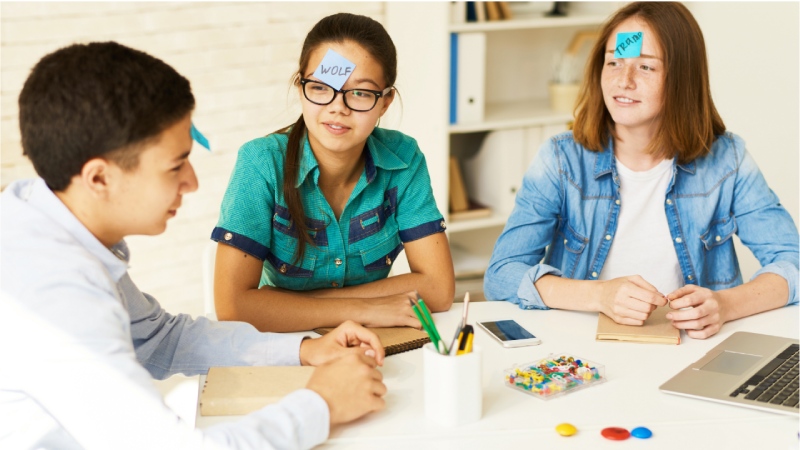
Kids Just Want to Have Fun
Above all, have fun. When you’re having fun with them, treating them like people, enjoying the activities with them, being silly, making jokes while you go, it will help them be themselves and enjoy the class too. Even if it’s not normally a subject they enjoy, your excitement will be contagious and help them feel comfortable showing you who they are.
Treating students like individuals is a class culture that you will create. It’s hard at first, it’s scary, and it feels like you’re doing a terrible job. But, once you get used to it, you trust yourself and your students, and it will become second nature. It will be fun for everyone and you will go to work excited and relaxed instead of dreading how “so and so” is going to react to today’s lesson.
It’s funny, when I first started this shift in my teaching I noticed that every class hated the idea of being in groups, but a few weeks into the semester, if they saw rows they were upset, outraged even. They learned that rows meant testing. So if my ninth graders were testing but my tenth and eleventh graders were not, my tenth and eleventh graders would freak out at the sight of rows, and I’d have to explain it’s for another class but today they’d have to learn in rows. Even then, they’d really rather work in their groups and try to convince me they’d put the class back into rows for me if I let them work in groups that day. It was so adorable and made me feel like my classroom choices were for the best, even though at the start of the year they told me they’d never like being in a group. This taught me that I was in control of how much fun my class could have. I was in control over whether groups worked or didn’t. I knew what I was doing after lots of practice and designing lessons around groups, choices, movement, and brain breaks. You are in control too. Don’t forget that on your tough days, those days you want to give up and go back into rows and have them all do the same assignment. I promise it gets easier and will become second nature. You will never regret focusing on teaching to the individual vice the masses.
This article is available and can be accessed in Spanish here.


